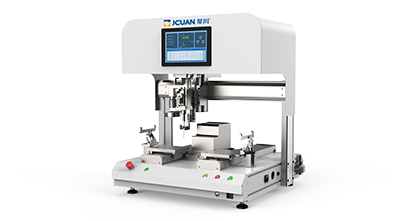As an important device for enhancing the efficiency of screw assembly in industrial production,automatic screw machines are prone to various malfunctions during long-term operation due to multiple factors such as mechanical wear,improper operation,and component aging.Understanding these common faults and their causes helps to promptly identify and solve problems,ensuring the smooth progress of production.
Mechanical failure is a relatively common problem for automatic screw machines.First of all,the wear of screw bits is a frequent occurrence.During the long-term process of tightening screws,the screwdriver bit constantly rubs against the screw head,which can cause deformation of the head shape and wear of the cutting edge.As a result,it cannot effectively hold the screw,leading to slippage and inability to tighten it tightly.Secondly,the problems of transmission components should not be ignored either.For instance,transmission devices such as belts and chains may become loose,wear out or even break after long-term use.A loose belt can lead to unstable power transmission,affecting the speed and accuracy of screw tightening.If the chain is severely worn,tooth skipping may occur,causing abnormal operation of the screw machine.In addition,the connection parts of mechanical structures,such as screws and nuts,may become loose during the vibration of the equipment,causing displacement of mechanical components and affecting the overall operational stability.

Electrical faults can also interfere with the normal operation of automatic screw machines.Power supply issues are relatively fundamental but critical fault points,such as unstable power supply voltage and poor contact of power lines,which may cause the equipment to fail to start or suddenly shut down during operation.Motor failure is also a common situation.Short circuits or open circuits in the motor windings can prevent the motor from operating normally.Damaged motor bearings will produce abnormal noise and vibration,affecting the strength and accuracy of screw tightening.In addition,components such as relays and contactors in the control circuit may experience problems like oxidation and adhesion of contacts after frequent use,which can prevent the circuit from being normally connected and disconnected,thereby affecting the start,stop and operation of the screw machine.
The malfunction of the feeding system seriously affects the working efficiency of the automatic screw machine.Screw blockage is one of the common faults in the feeding system.Inconsistent screw specifications,impurities in the feeding track,or improper arrangement of screws may all cause the screws to get stuck in the track and fail to be smoothly conveyed to the screw screwdriver.Insufficient suction force of the feeder's suction nozzle can also lead to failed screw picking.Aging,damage of the suction nozzle,or unstable air source pressure can all prevent the suction nozzle from firmly adhering to the screw,resulting in the screw falling off or being unable to be picked up.In addition,the wear of the feeding track will change the shape and size of the track,causing the screws to run poorly within the track and even leading to material jamming.
A malfunction of the control system can cause the operation of the automatic screwdriver to get out of control.Sensor failure is a common issue.If the screw in place sensor,the tightening completion sensor,etc.malfunction,they cannot accurately detect the position and tightening status of the screw,which may lead to incorrect equipment operation,such as starting to tighten before the screw is in place,or continuing to operate after the tightening is completed.Program errors in PLC(Programmable Logic Controller)may also cause malfunctions.Unreasonable program writing and incorrect parameter Settings can lead to confusion in the operation logic of the equipment and prevent it from completing the screw assembly work according to the predetermined process.In addition,faults in the human-machine interface,such as malfunctioning touch screens or abnormal displays,can affect the operators'control and monitoring of the equipment,causing inconvenience to production.